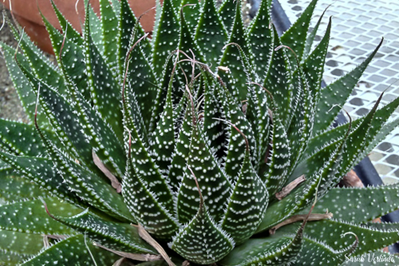Lace aloe
Aristaloe aristata – Lace aloe
Morphology

A dwarf version of the Aloe genus. It is stemless with dark grey-green leaves densely packed in a rosette. Each leaf is about 15cm long and 2cm wide, spotted with tubercles. Its fleshy leaves retain water allowing the plant to get through periods of drought without trouble. It is a small plant, usually growing about 15 to 20cm in a tight rosette formation.
Plant Growth
The lifespan and growth period varies on how well the plant is maintained but this plant can live 50 to 100 years. It produces red/coral colored flowers that are long and tubular.
Distribution
The plant is native to South Africa and also grows in California, Texas, Arizona, and Louisiana.
Habitat
Aristaloe aristata is native to South Africa and is therefore best suited to warm, dry conditions. Its fleshy leaves retain water allowing the plant to get through periods of drought without trouble. It is commonly cultivated as a garden plant around the world. It prefers well-drained soils, but can tolerate a variety of rainfalls. It can also tolerate temperatures down to -7°C, due to its adaptation to cold mountain tops.
Reproduction
Aristaloe aristata produces offsets that can be taken from the base of a plant in early summer. These small new rosettes are often attached to the parent by a short underground stolon and may already have little roots, which should be retained for propagation purposes. This greenhouse plant has produced many small shoots that have been planted throughout campus – check them out on the south-east end of the UW2 Building near Common Grounds.
Other Information
- Pharmacological properties: One biologically active substance contained in the juice of aloe leaves is Aloin. Aloin is one of a group of chemicals known as anthraquinones used for digestive treatments.
- Medicinal effects: This species of aloe is not used for medicinal or skin uses.
- Toxicological effects: Ingestion of this plant can cause severe discomfort.
- Other Uses: Ornamental for gardens and lawns, especially xeriscaping (low water landscaping).
This article was contributed by Tim Williams (BBIO 220 SUM’15), using resource www.PlantsRescue.com.
Edited by Sarah Verlinde. For questions regarding the UWB/CC Plant Tour, contact Sarah at severlin@uw.edu.
